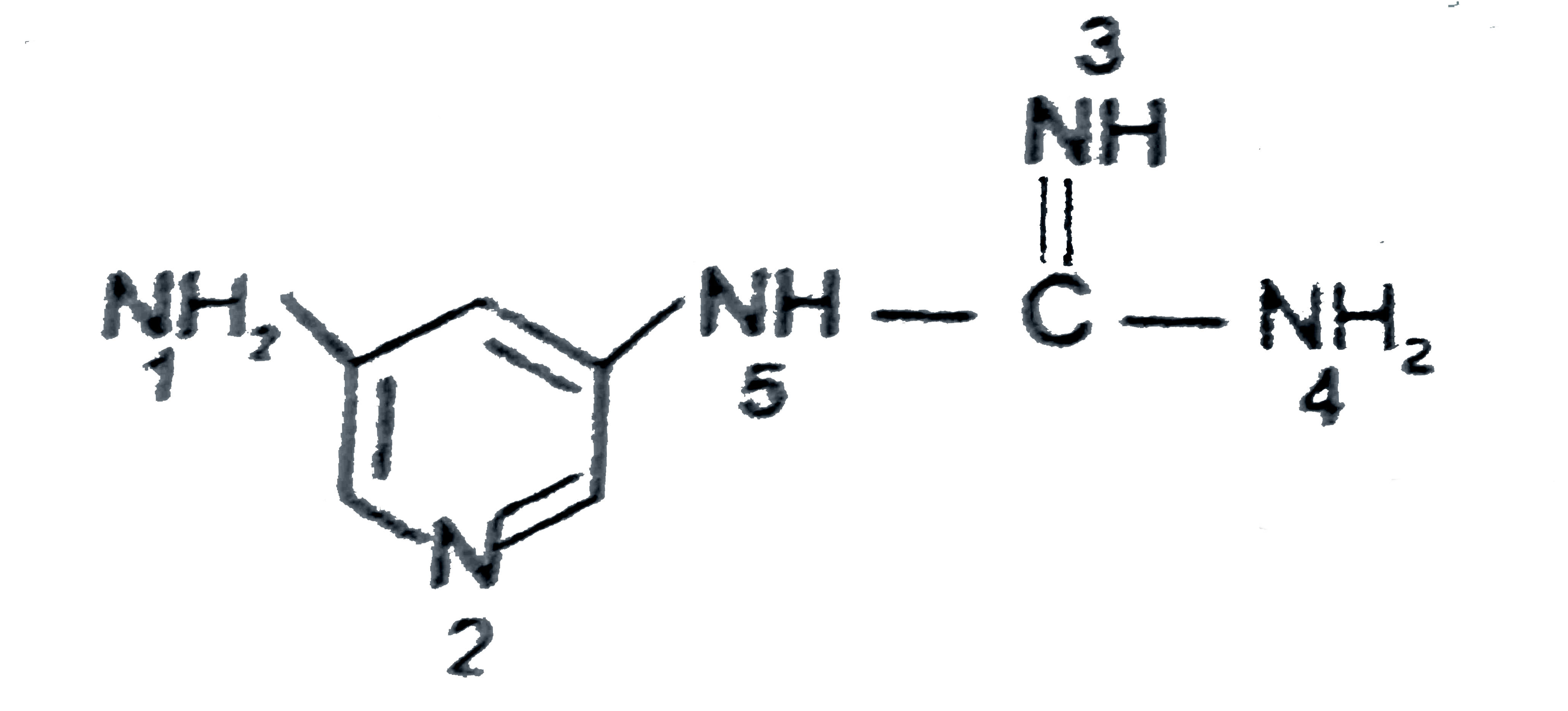Which halide of nitrogen is least basic
NBr3
NI3
NCl3
NF3
The correct Answer is:B
To determine which halide of nitrogen is the least basic among the options provided (NBr3, NI3, NCl3, and NF3), we need to analyze the ability of each nitrogen halide to donate its lone pair of electrons. The basicity of a compound is largely influenced by the availability of the lone pair on the nitrogen atom for donation.
1. Understanding Basicity: Basicity is the ability of a compound to donate a lone pair of electrons. The more available the lone pair, the more basic the compound.
2. Examining NF3:
- In NF3, nitrogen has a lone pair in its 2p orbital.
- Fluorine has a high electronegativity, which means it will pull the electron density towards itself, making the lone pair less available for donation.
- Additionally, there is a significant amount of back-bonding between nitrogen and fluorine, which further stabilizes the lone pair and reduces basicity.
3. Examining NCl3:
- In NCl3, nitrogen also has a lone pair in its 2p orbital, but chlorine is less electronegative than fluorine.
- The distance between the 2p orbital of nitrogen and the 3p orbital of chlorine is larger than that between nitrogen and fluorine, leading to less effective back-bonding compared to NF3.
- Therefore, NCl3 is more basic than NF3 but still less basic than nitrogen halides with larger halogens.
4. Examining NBr3:
- In NBr3, nitrogen still has a lone pair in its 2p orbital, but bromine is even less electronegative than chlorine.
- The distance between the 2p orbital of nitrogen and the 4p orbital of bromine is greater than that in NCl3, leading to even less effective back-bonding.
- Thus, NBr3 is more basic than both NF3 and NCl3.
5. Examining NI3:
- In NI3, nitrogen has its lone pair in the 2p orbital, while iodine has a 5p orbital.
- The large difference in energy levels and distance means that the lone pair on nitrogen is not effectively shared or stabilized by iodine.
- Therefore, the lone pair is more available for donation, making NI3 the most basic among the nitrogen halides.
6. Conclusion:
- Based on the analysis, NF3 is the least basic halide of nitrogen due to strong back-bonding and high electronegativity of fluorine, which stabilizes the lone pair and makes it less available for donation.
Final Answer:
The least basic halide of nitrogen is NF3.
- In NF3, nitrogen has a lone pair in its 2p orbital.
- Fluorine has a high electronegativity, which means it will pull the electron density towards itself, making the lone pair less available for donation.
- Additionally, there is a significant amount of back-bonding between nitrogen and fluorine, which further stabilizes the lone pair and reduces basicity.
- In NCl3, nitrogen also has a lone pair in its 2p orbital, but chlorine is less electronegative than fluorine.
- The distance between the 2p orbital of nitrogen and the 3p orbital of chlorine is larger than that between nitrogen and fluorine, leading to less effective back-bonding compared to NF3.
- Therefore, NCl3 is more basic than NF3 but still less basic than nitrogen halides with larger halogens.
- In NBr3, nitrogen still has a lone pair in its 2p orbital, but bromine is even less electronegative than chlorine.
- The distance between the 2p orbital of nitrogen and the 4p orbital of bromine is greater than that in NCl3, leading to even less effective back-bonding.
- Thus, NBr3 is more basic than both NF3 and NCl3.
- In NI3, nitrogen has its lone pair in the 2p orbital, while iodine has a 5p orbital.
- The large difference in energy levels and distance means that the lone pair on nitrogen is not effectively shared or stabilized by iodine.
- Therefore, the lone pair is more available for donation, making NI3 the most basic among the nitrogen halides.
- Based on the analysis, NF3 is the least basic halide of nitrogen due to strong back-bonding and high electronegativity of fluorine, which stabilizes the lone pair and makes it less available for donation.
The least basic halide of nitrogen is NF3.
Topper's Solved these Questions
- IONIC EQUILIBRIUMBOOK - ERRORLESS CHAPTER - IONIC EQUILIBRIUMEXERCISE - Ordinary Thinking (Common ion effect, Isohydric solutions, Solubility product, Ionic product of water and Salt hydrolysis )
137 Videos
- IONIC EQUILIBRIUMBOOK - ERRORLESS CHAPTER - IONIC EQUILIBRIUMEXERCISE - Ordinary Thinking (Hydrogen ion concentration- pH scale and buffer solution )
225 Videos
- IONIC EQUILIBRIUMBOOK - ERRORLESS CHAPTER - IONIC EQUILIBRIUMEXERCISE - JS Jee Section (JEE Advanced (Numeric answer type question))
1 Videos
- HYDROCARBONBOOK - ERRORLESS CHAPTER - HYDROCARBONEXERCISE - JEE SECTION (Matrix Match type questions)
6 Videos
- NITROGEN CONTAINING COMPOUNDS BOOK - ERRORLESS CHAPTER - NITROGEN CONTAINING COMPOUNDS EXERCISE - JEE (ADVANCED) 2018 MORE THAN ONE CHOICE CORRECT ANSWER
1 Videos
Similar Questions
Knowledge Check
Which one is least basic ?
ATb(OH)3BYb(OH)3CGd(OH)3DEu(OH)3Which nitrogen trihalides is least basic
ANF3BNCl3CNBr3DNI3Which nitrogen trihalides is least basic
ANF3BNCl3CNBr3DNI3
Among the trihalides of nitrogen, which is the least basic ?
View SolutionWhich of the following is least basic . ?
View SolutionWhich nitrogen atom is most basic ?

View SolutionWhich one of the following is least basic ?
View SolutionWhich of the following is least basic in aqueous medium ?
View Solution
